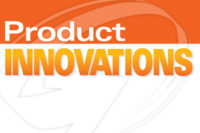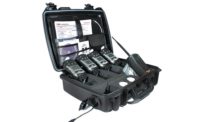Wireless gas detection delivers key advantages
|
HMAS Platypus Remediation Project Remediation contractor: Thiess Size of cleanup site: 4.5 acres (1.8 hectares) Main toxic materials: PAHs*, VOCs** such as Benzene, and heavy metals. No. of AreaRAE wireless monitors: 8 Additional instruments: UltraRAE 3000, ToxiRAE Pros, RAELink3 modems/repeaters. * Poly-aromatic hydrocarbons ** Volatile organic compounds |
It’s difficult to imagine undertaking a remediation project without wireless monitoring.
Australia’s leading remediation specialist Thiess has deployed wireless-connected systems for remote gas-detection monitoring at large toxic-cleanup projects since 2007.
Today, Thiess is employing the technology on the former HMAS Platypus site, a complex project requiring remediation of 30,000 tonnes of contaminated waste on the idyllic foreshore of Sydney’s world- famous harbor.
Thiess’ Manager for Industrial Health and Hygiene Kate Cole said wireless gas-detection systems – along with other ‘connected’ gas-detection instruments – have become indispensable tools for collecting multiple sensor readings in real-time, keeping workers, nearby communities, assets, and the environment safe.
“Conducting continuous fence line or perimeter measurements using a networked systems approach to monitor the impact of our activities outside the work area is one of the most common ways to ensure that remediation activities are performed responsibly,” Cole said.
“The systems immediately sound multiple simultaneous alarms at the detection site (which can be turned off to prevent obtrusive noise) and at the operations center if dangerous gas or vapors are detected. They also log sensor data for later retrieval to help safety professionals generate reports, respond to inquiries, and evaluate and improve safety methods.”
Wireless gas-detection systems offer a host of benefits during environmental remediation projects, including:
• Allowing personnel access to securely view information and site maps in real-time from virtually anywhere
• Providing efficiencies that free-up monitoring personnel to focus on other tasks
• Enabling fast safety-related decision-making
• Collecting robust data sets and validating data to improve future safety or respond to inquiries
• Building stakeholder confidence – including management and employees – by providing relevant and accurate information about exposure risks.
Complex Remediation Project
Drawing on experience and expertise, Thiess has taken on some of Australia’s most technically complex environmental remediation projects, utilizing emerging methodologies and technologies to improve its remediation processes and safety protocols.
In 2012, Thiess began remedial work to rehabilitate a disused naval submarine base in Sydney Harbor. The high-profile project is on schedule to finish early 2014, opening the way for future commercial or parkland development at the site.
Located on a quiet inlet directly below apartments boasting million-dollar harbor views, Cole said the former HMAS Platypus site is unique.
“The site previously housed a gasworks facility, a workshop for servicing torpedoes and a base for Australian submarines. However operations at the old gasworks account for the lion’s share of the contamination,” she said.
The Sydney Harbor Federation Trust acquired the site in 2005 to protect the heritage of Sydney Harbor. It includes about 4.5 acres (1.8 hectares) and 11 structures, many of which will be renewed for their cultural significance.
Situated in a highly populated area, a custom odor-control enclosure (OCE) has been constructed on the site to contain emissions during remediation work such as excavating and removing contaminated soil. Volatile organic compounds (VOCs) such as benzene (a known carcinogen), PAHs and heavy metals present the biggest threats. Thiess is using perimeter monitors to confirm the tent-like structure is effective at keeping emissions contained, while rigorous monitoring is undertaken to maintain worker safety inside the OCE.
“Thiess designed and built an emissions-control system to ventilate the OCE atmosphere and we run the air through a series of filtration systems before it is released,” Cole said.
“The net result is you don’t smell these highly-odorous compounds in the community,” she said. “It does, however, concentrate contaminants within the OCE, requiring an aggressive gas-detection monitoring strategy to ensure worker safety is not compromised.”
Aggressive monitoring srategy
Thiess deploys RAE Systems’ wireless AreaRAE multi-threat detection monitors to ‘screen’ the boundaries of the Platypus site. It’s the same system the company has previously used on other large-scale remediation projects, such as the Hunter River Remediation Project, a winner at the United Nations World Environment Day Awards in 2011.
Inside the OCE, additional wireless AreaRAE monitors are used as part of the OCE health network. Thiess industrial hygiene experts set the alarm thresholds low for early detection and to allow hygiene teams time to reach the OCE in response. If an alarm occurs, the hygiene team immediately conducts ‘attended’ measurements to confirm readings using other instruments, such as RAE Systems’ hand-held UltraRAE 3000, a photoionization detector that can measure VOCs at a high resolution and perform benzene-specific monitoring where required.
“We use the wide-area monitors in the OCE as our eyes and ears to initially screen for emissions,” Cole said. “If a problem arises, we then go in and use our portable instruments to focus on certain areas that may need additional attention. Our hand-held instruments such as the MultiRAE lite and the ToxiRAE can also connect to the monitoring network to log measurements using a RAELink3 modem from RAE Systems.”
Signal routers and repeaters, such as RAELink3 are used to extend the system’s range, add access points and send signals around or over line-of-sight obstacles. The RAELink3 allows integration of many RAE Systems gas and radiation monitors, and select third-party devices, into a single real-time wireless safety network. The system can send data and GPS coordinates to a host computer from up to 2 miles (3km) away.
Real-time monitoring software
According to Cole, the use of wireless detection monitors brings substantial advantages to the work site.
“Instead of placing engineering personnel with handheld detectors at perimeter locations to capture readings and then return to the operations center to download the data, we gain efficiencies by redeploying people to other tasks and letting automated perimeter monitors collect and transmit data. We also prevent unnecessary exposure scenarios by keeping personnel out of those locations,” she said.
“Readings and alarm information can then be viewed in real-time using monitoring software, which includes a site map that displays the location and alarm status of every sensor on the network. Industrial hygienists use the real-time readings to initially assess personal protective equipment requirements, such as determining if further upgrades in respiratory protective equipment may be necessary.”
At the Platypus site, RAE Systems’ monitoring software – ProRAE Guardian Wireless Safety System – aggregates, logs and displays sensor information from a range of wireless gas-detection instruments into a comprehensive real-time display of threat data. The system can also integrate biometric data and GPS information, and can be viewed on smartphones and Apple iPads®.
Building stakeholder confidence
Wireless gas systems and the data they collect are integral tools for verifying the effectiveness of occupational health and environmental controls to protect the health of workers, the community and the surrounding environment.
The data is used to generate regular reports detailing monitoring results and to identify trends to improve health and safety. Updated information about the effectiveness of the controls implemented can be easily communicated to the workforce and local communities.
“Wireless gas-detection systems provide robust real-time data sets that give management and workers in these hazardous environments confidence the implemented controls are effective at keeping people safe and that monitoring is being performed responsibly,” Cole said.
Monitoring records and log data can be accessed and reviewed later to address inquiries, mitigate risks, and potentially reduce ongoing costs and expenses as part of an ongoing improvement process.
“If we receive a community inquiry, we can go back in time and provide data collected by our calibrated equipment to confirm conditions at a set location and time,” Cole explained. “That can go a long way to show we operated safely and in accordance to respective legislative requirements.”
Information access from anywhere
For industrial hygienists, spending time outside the office is part of the job. But with wireless monitoring systems that include integrated data-management capabilities such as the AreaRAE system, managing multiple locations is efficient and convenient.
The system comes with a fully supported cascade mode, allowing aggregation of multiple sites into a map-based display for real-time monitoring from nearly anywhere. By setting one or two parameters on a compatible wireless system, one monitor becomes a peer on the other system, which enables the sharing of detection data and alarms in real time.
Cole uses the data-sharing feature to manage multiple job locations. In addition to her work at the Platypus site, Cole also assists with on-going gas-detection at a mine in North Queensland, over 1,900 miles (3,000 km) away.
“While at the Platypus site or our office in Parramatta, I can view information from multiple facilities in real-time by cascading the information to one of the other networks,” she said.
“It’s quite useful to be able to obtain the data we need, no matter where we are. When questions arise, we can offer up solutions or recommendations based on the latest information.”
Looking for a reprint of this article?
From high-res PDFs to custom plaques, order your copy today!




